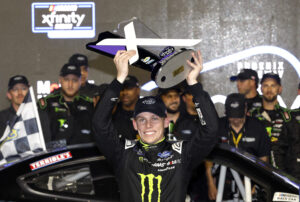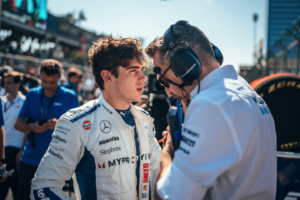The 13th round of the 2018 Formula 1 season will take place this weekend at the Spa-Francorchamps circuit. The Belgian Grand Prix will see the return of F1 after the almost month-long summer break. The season resumes at the very traditional Spa circuit with nine races to go . The circuit is set in the rustic surroundings of the Belgian Ardennes countryside.
Belgian GP – History, Stats, Circuit Guide
This historical circuit is one of the most challenging high-speed and technically demanding circuits on the calendar. The traditional nature of the circuit has made it a popular venue among the F1 fraternity and fans.
The History
The original track was built using the public roads around the towns of Spa, Malmedy and Stavelot in the 1920s. In 1950, the fifth race of the first Formula 1 World Championship was held at this narrow winding track. The hilly 14-kilometre route was a high-speed track with quick directional and elevation changes around the fast corners. In the 1960s, major crashes causing injuries and fatalities were common.
In 1966, Jackie Stewart (racing for the BRM team) suffered a high-speed crash that caused him to start a crusade for better safety at all tracks. The lack of safety at Spa finally led to the boycott of the Belgian GP by the drivers in 1969.
After one final race in 1970 at Spa, the Belgian GP was hosted at the Zolder and Nivelles tracks in Belgium until 1982. In 1983, F1 returned to the modern seven-kilometre long Spa circuit, the longest circuit on the current F1 calendar. The circuit conforms to the contemporary safety standards, but still retains most of the iconic corners of the original circuit.
Alain Prost won the first race on this newly-configured track for the Renault team. From 1985 onwards, the Belgian GP has always been held at Spa (except for 2003 and 2006 when the Belgian GP was not held).
The Teams and Drivers
The Ferrari team has recorded 12 of their 16 Belgian Grand Prix wins at this circuit. They are followed closely by arch-rivals McLaren with 12 of 14 wins in Belgium at the Spa circuit. Mercedes has four wins at Spa. Red Bull Racing and Williams (four overall wins) have three wins each at Spa.
The inaugural race was won by the great Argentine Juan-Manuel Fangio (driving for Alfa Romeo at that time). The ’Regenmeister’ Schumacher has won six times at the Belgian GP to top the drivers’ leaderboard. The seven-time world champion launched his career with his first race for the Jordan team at Spa. The German scored his first GP win at this venue in 1992 for Benetton. In 2012, he achieved a final career milestone, when he marked his 300th race at Spa. Many F1 fans will remember Schumacher’s great drives at Spa with nostalgia.
Ayrton Senna has been the second-most successful driver in Belgium with five wins in the 1980s. Damon Hill with three wins, including the Jordan team’s first race win in a classic race in 1998, shared the spoils with Schumacher during the 1990s. Jim Clark won a total of four times at the old Spa circuit in the 1960s. The first-ever winner of the Belgian GP, Fangio had a total of three wins to his credit at the old Spa circuit.
Among the current drivers, Kimi Raikkonen has four wins to his credit. Lewis Hamilton has three wins here. Sebastian Vettel has two wins at Spa. Daniel Ricciardo has one win when the Mercedes drivers collided in 2014. Belgian Stoffel Vandoorne of McLaren will race at his home Grand Prix.
The Circuit
The 7.004 km Spa-Francorchamps circuit with 19 corners (medium and high-speed corners) and several long straights is one of the fastest tracks on the F1 calendar with an average speed of 240 km/h. The race is run over only 44 laps on the longest circuit in F1.
The first and second sectors require a low downforce setup with the long straights taken flat out, but the twisting middle sector with ten corners requires a higher downforce setup. So a medium downforce setup is a compromise to balance the requirements of the different sectors. The long laps are done at full throttle 70% of the time and the fuel consumption is high. The brake-wear is low, but high loads are placed on the engines and tyres.
Sectors and Corners
Sector 1 from Turn 1 to Turn 4 starts with the tight right-hand hairpin at La Source (Turn 1) leading to the steep downhill run to one of the most iconic corners in F1 – Eau Rouge (Turn 3). The track crosses the Eau Rouge stream and the left-right hand combination of corners of Eau Rouge and Raidillon (Turn 4) at the bottom of the hill leads to the uphill Kemmel straight. This fast straight takes the drivers to the crest of the hill and then a blind exit. The drivers can take the entire stretch from La Source to the exit of Kemmel straight at full throttle for over 20 seconds, placing high stresses on the engines at Spa.
Sector 2 from Turn 5 to Turn 14 is the twisty middle sector that requires much higher downforce. Exiting out from the Kemmel straight the drivers brake hard into the right-hander at Les Combes (Turn 5). This corner presents one of the best overtaking spots on the track. The downhill run to Rivage (Turn 8) is followed by the left-hand corner at Turn 9 which plummets downhill to the sweeping corner at Pouhon (Turn 10). A set of twisting corners leads to the last corner at Turn 14.
Sector 3 from Turn 15 to Turn 19 starts with the sweeping right-hander at Turn 15 leading to the long back straight that ends with Blanchimont (Turn 17). This high-speed corner leads to the Bus Stop chicane leading to the final start-finish straight.
DRS Zones
There are two DRS zones this year at this circuit with many overtaking opportunities. The first DRS detection point will be before Turn 2, with the first DRS activation point after Turn 4. The second DRS detection point will be before Turn 18, with the second DRS activation point after Turn 19.
Tyre Strategies
Pirelli tyre choices for this race are the white-striped medium tyres, the yellow-striped soft tyres, and the red-striped supersoft tyres. The drivers have chosen six or more sets of the supersoft tyres of the thirteen sets allocated to them. The two McLaren drivers, Fernando Alonso and Vandoorne, are the exceptions as they have chosen only four sets of supersoft tyres.
The rough surface of the track and the high-speed corners always put a heavy load on the tyres. The higher downforce cars this year will only cause higher tyre wear. But with rain expected for the qualification and race, we could see the full wet tyres in action and very mixed strategies indeed.

Current Form
Mercedes (345 pts) lead the constructors’ championship by ten-points from arch-rival Ferrari (335 pts). Red Bull Racing (223 pts) is in third position having lost ground to the top 2 teams in recent races.
Renault (82 pts) leads the midfield teams in fourth position. Haas F1 (66 pts) is in fifth position. Force India went into administration as the summer break started. A consortium-led by Lawrence Stroll is the new owner who has rescued the team.
Racing Point Force India is the renamed team which will start with zero points in the constructors’ championship. But the two drivers, Sergio Perez and Esteban Ocon, will retain their points in the drivers’ championship.
Ferrari and Mercedes are both introducing upgraded engines at this power track. In 2017, it was starting with this race at Spa that Hamilton and Mercedes started taking control of both championships. Ferrari will be looking to fight back and avoid the same mistakes again.
Drivers’ Championship
Hamilton (213 pts) leads the title race by 24-points from Vettel (189 pts). The lead has swung between the two drivers all-season long. Kimi Raikkonen (146 pts) is in third position with strong podium finishes in the last five races. Valtteri Bottas (132 pts) is in fourth position now. Daniel Ricciardo (118 pts) is in fifth and rounds out the top 5 positions in the drivers’ championship.
Hamilton is the defending champion at the Belgian GP. The development race between the top 2 teams and the nature of the race tracks has swung the advantage between Hamilton and Vettel all-season long. It will be interesting to see which team gains the edge after the upgrades related to the engines and chassis after the summer break.
During the summer break, there have been major driver announcements for the 2019 season. Ricciardo has decided to leave Red Bull and seek fresh challenges with Renault. Alonso will not be driving in F1 in 2019. Carlos Sainz will be replacing him at McLaren next season. Pierre Gasly will replace Ricciardo at Red Bull in 2019. More changes and announcements on the driver front are expected over the next few races.
The Belgian GP at Spa, especially with rain forecast, always throws up interesting races. Both Hamilton and Vettel will be vying with each other to start the second-half of the season with a win. So it is all to play for at the classic Spa track this weekend.
MAIN PHOTO:
Embed from Getty Images






